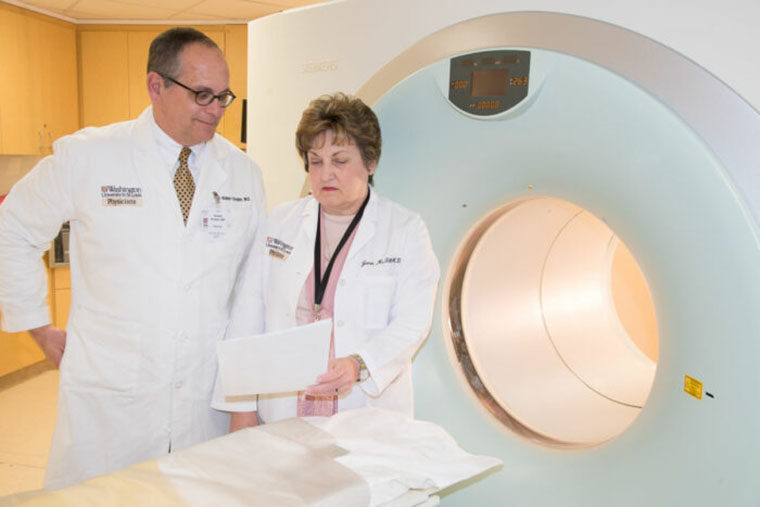PET scans can reveal subtle signs of diseases such as cancer, Alzheimer’s and atherosclerosis not detectable through other imaging tools. The technology holds enormous promise for improving early diagnosis, monitoring the effectiveness of treatment, and tailoring therapy to each individual’s particular needs.
PET scans rely on radioactive compounds, or tracers, to identify signs of disease in the body. Such tracers can be injected, inhaled or swallowed – depending on the organ under study – and when they find their target, they show up as bright spots on scans. By reading such scans, researchers can detect indications of disease such as toxic clumps of proteins and clusters of tumor cells.
A few PET-based diagnostics have been approved by the FDA, but experts believe the technology could do so much more – if only there were more people designing and testing new PET tracers. With the help of a five-year, $6.3 million grant from the National Institute of Biomedical Imaging and Bioengineering of the National Institutes of Health (NIH), Robert J. Gropler, MD, a professor of radiology at Washington University School of Medicine in St. Louis, aims to help PET technology reach its potential by expanding the community of PET researchers.
Few research institutions are equipped to design and test new PET tracers. Making the radioactive part of a tracer requires a multimillion-dollar machine called a cyclotron – and shepherding experimental radioactive compounds through the regulatory labyrinth to approval for use in people is an art form in itself. The university’s Mallinckrodt Institute of Radiology (MIR) is one of only a handful of sites nationwide with the expertise and infrastructure needed to generate and evaluate novel PET tracers.
Gropler, who is also senior vice chair and division director of radiological sciences, plans to establish the PET Radiotracer Translation and Resource Center at MIR to develop and evaluate a broad portfolio of PET tracers, and to train researchers at other institutions so they can participate in the effort.
“This center is intended to get over the roadblocks to using tracers in people – much of which comes down to capacity,” Gropler said. “Once we have designed a tracer, it needs to be tested in animal models, and if those look promising, in people. By partnering with other institutions, we can test several different animal models simultaneously, and do multicenter clinical trials, drawing from a larger patient population than we have here. This will vastly accelerate how quickly we can evaluate these tracers and get them to the people who need them.”
The center at MIR will serve as headquarters and home for research and development. Some experimental radiotracers will be shipped to other institutions for testing, but others decay too quickly for transport. For those, Gropler and colleagues will ship a stable portion of the tracer, and train researchers and technicians to produce the remaining component locally.
The center will focus on developing and assessing tracers to detect signs of inflammation and oxidative stress – the damage that occurs when reactive oxygen molecules similar to bleach build up inside a cell. Inflammation and oxidative stress are common elements in disparate diseases including atherosclerosis, Alzheimer’s disease, multiple sclerosis and several kinds of cancer.
